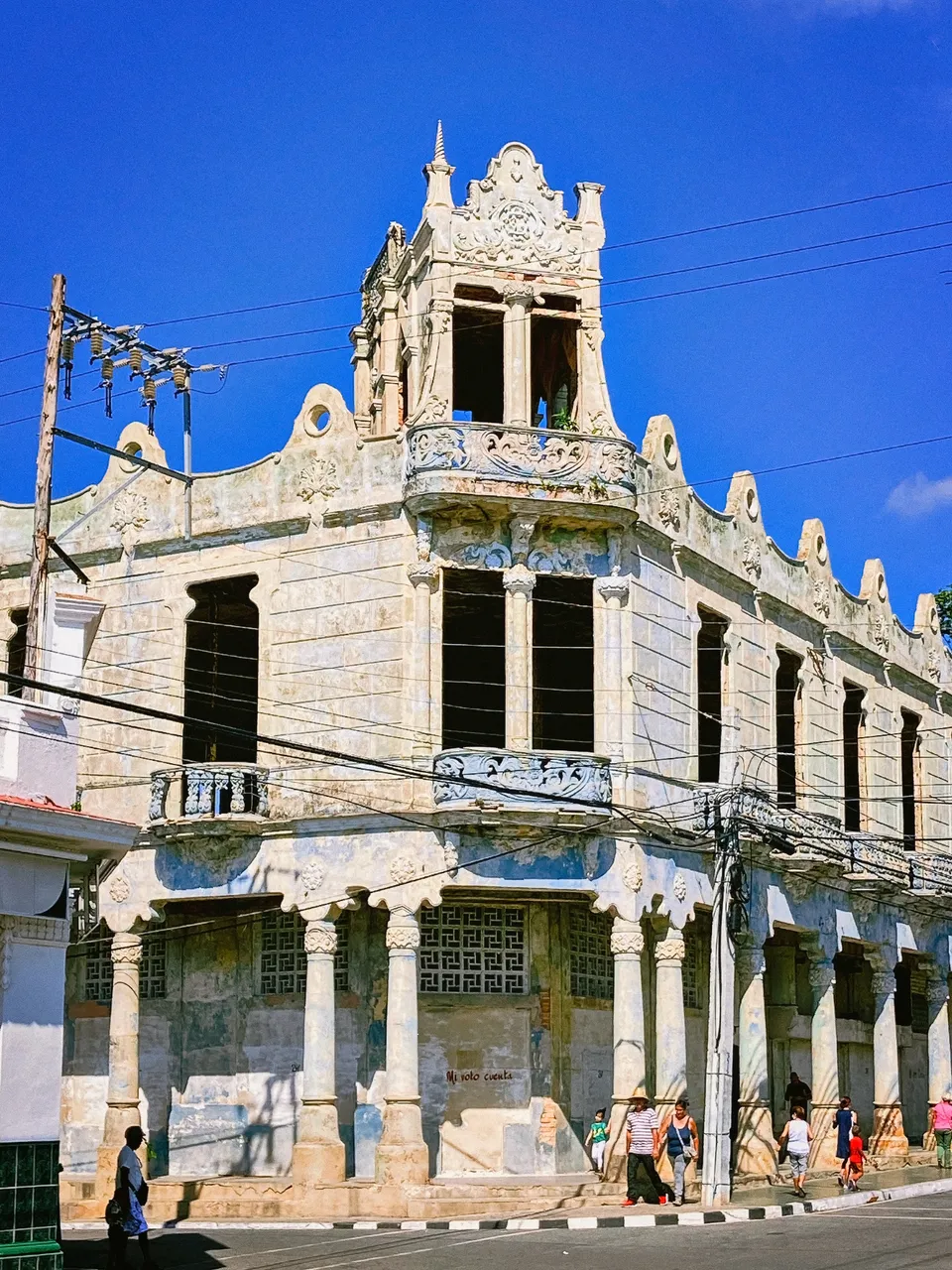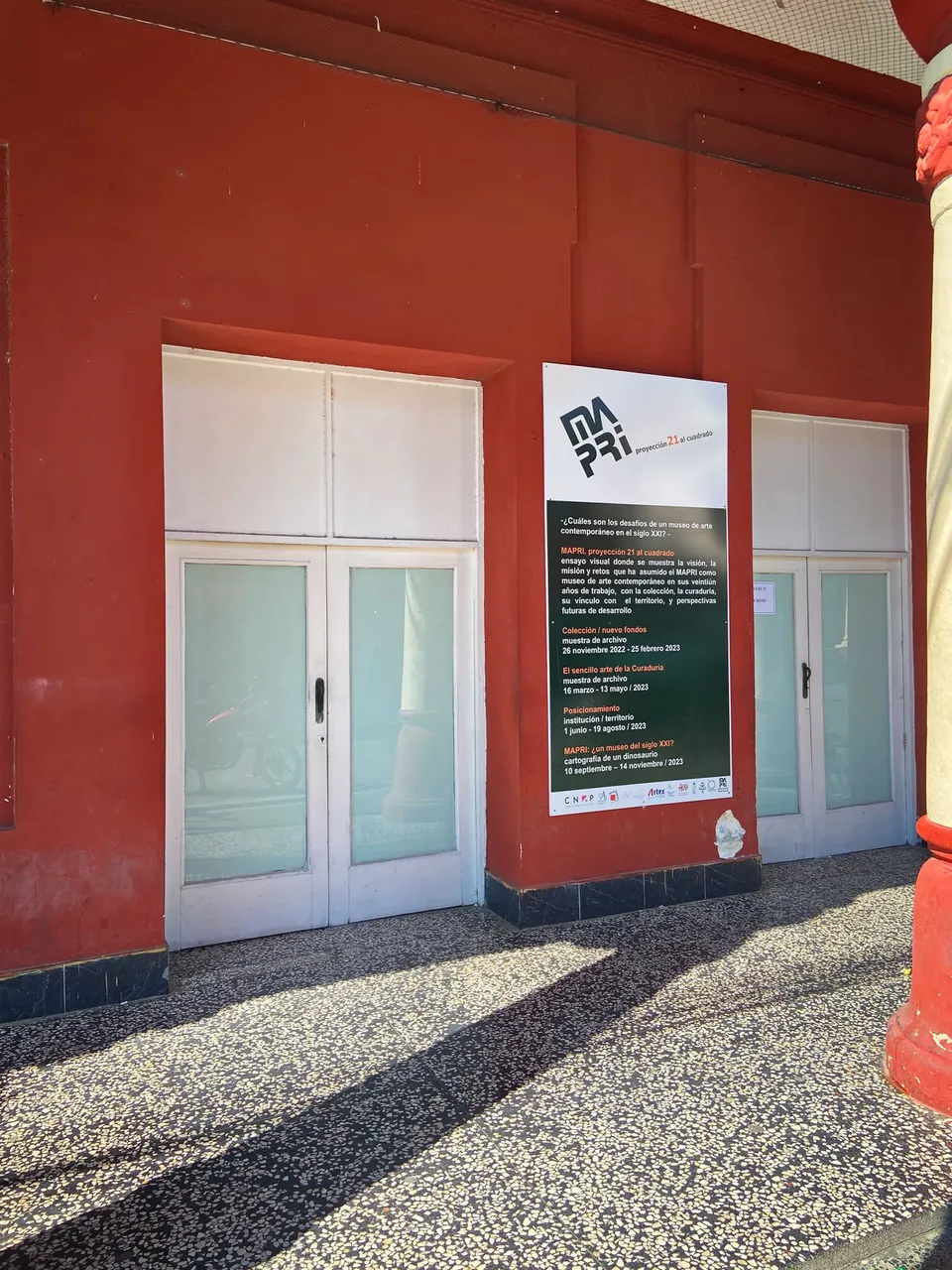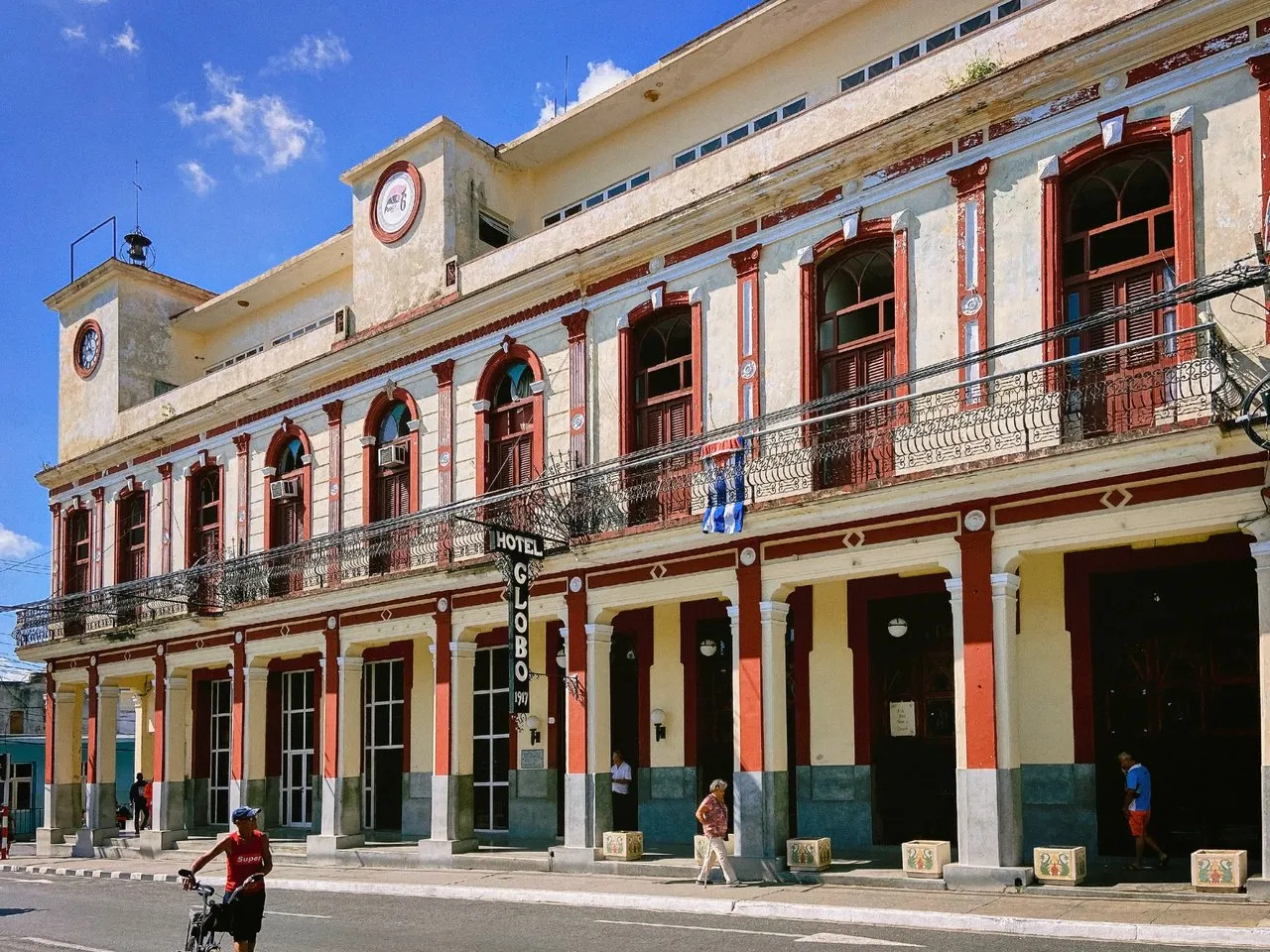
Hi friends of Pinmapple
I confess that I had other plans for today's post, but some friends asked me to do a review of the city of Pinar del Río. I went out with my camera and didn't know where to start. I moved to the heart of the city, the intersection of Calle José Martí or Calle Real and Vélez Caviedes. For many years, this crossroads marked the division of the city into four neighborhoods and from that point on, the streets numbered in both directions. Let's say Martí (east) No. 10 or Martí (west) No. 10. This is the case with the other streets.
For those who do not know the city, I tell you that it is the Capital of the westernmost province of Cuba and that it has the same name. Located in the southern plain of the province of Pinar del Río, on the banks of the Guamá River. Its name is attributed to the existence of a pine forest along the banks of the Guamá River, on the site where it settled. Formerly it was known as Nueva Filipinas.
A bit of history.
If we look on Wikipedia we find the following:
"This city was founded in 1699, although its genesis is earlier. In 1578 the council of Havana granted a savannah called "Río Feo," next to the farm of Alonso Rojas, Marquis of San Felipe and Santiago, to Francisco de Rojas. Five months later, another donation of the same lands, with a different name, to Gaspar Hernández. As both failed to comply with the conditions of the contract, the town hall of Havana proceeded to a demarcation of those lands, designating them with the names of Pinar del Río, Las Taironas, and San Mateo, making them the object of new grants. After the changes, swaps, and transactions, they ended up among different owners in 1719. But already since 1699, the neighborhood of Pinar del Río was forming, with the proof that there was a priest providing spiritual services without a church in the San Rosendo district, who baptized on August 2 of that year a child of some natives of Jamaica.
In 1710, the first hermitage was built in the corral of Pinar del Río, under the patronage of San Rosendo, a date that has led some historians to consider it the foundation of this city. Even though neither 1699 nor 1710 determined the development of its population, in 1773, Captain General Don Felipe Fonsdeviela, faced with the need to create a nucleus that would serve as the head of the lands that eventually became the province and that already enjoyed being excellent for tobacco cultivation, distributed the first plots to the residents of this place. At the same time, he ordered a qualified subordinate to choose the most practical seat for said town and to fix the limits of its jurisdiction. It was thus Captain General Fonsdeviela who created the city and it was also in his honor that it was named Nueva Filipinas, after his patronymic. The town received the title of villa on September 10, 1867."
The present day
Many years have passed since then and, logically, have brought changes to the city, which has evolved over time. Despite the fact that the province of Pinar del Río has wonderful landscapes, among the most beautiful in the country, the city is not particularly known for its tourist attractions. As a provincial capital, it is also not very large, with a population of around 120,000. It should be noted that the urban area has expanded, especially to the northeast, with the growth of the Hermanos Cruz neighborhood (formerly Calero). Nevertheless, there are several sites of architectural, cultural, and social interest. Some of them have been discussed in previous posts, such as the Independence Park, the Guasch Palace, the Cathedral of San Rosendo, the Palace of Justice, the Milanés Theater, the History Museum, and others.

The tour
I was in a dilemma, as I didn't want to repeat myself and didn't know where to start, but luck came to my aid. As I mentioned before, I was in the heart of the city and right there I saw a sign that showed me the solution.
It listed some of the points of interest in the city center. In my opinion, some of the most important ones are not included there, and there may be others that are not the most representative, but they are still places in the city that may be of interest to those who do not know it and want to explore it further.
I decided to follow the same order as the sign to show them to you. Let's see:
1. Hotel Comercio
This building is considered a jewel of Pinar del Río architecture, due to its art nouveau style. It is believed that it could be the first of this style given its early appearance around 1870. Architect Aníbal González
Since its construction, this hotel has been very popular thanks to its privileged location in the center of the city. In addition, the buses that connected the city with the capital of the country departed and arrived from the place.
At present it is in a truly pitiful state, practically in ruins, although it is said that it is finally going to be restored.


2. Museo de arte Pinar del Río (MAPRI)
The Museum of Art of Pinar del Río (MAPRI) is a museum located in the city of Pinar del Río, Cuba. It was founded in 1983 and is dedicated to the preservation, exhibition, and promotion of contemporary art, particularly from the Pinar del Río province and the western region of Cuba.
The museum's collection includes works by Cuban artists such as Pedro Pablo Oliva, Roberto Fabelo, and Zaida del Río, as well as international artists such as Pablo Picasso and Joan Miró. MAPRI also hosts temporary exhibitions, workshops, and cultural events throughout the year.
Today, MAPRI is considered one of the most important cultural institutions in Pinar del Río province and is a must-visit destination for art lovers visiting Cuba.

3. Cine Praga
The Aída Cinema, now called the Praga Cinema, was inaugurated on April 9, 1939. This cinema has a capacity of 1,800 spectators. It is located on Vélez Caviedes Street between Yagruma and Retiro.

4. Heladería Copelia
It is a very popular gastronomic center in the city, specializing in the sale of ice cream. It is located on Vélez Caviedes Street between Yagruma and Retiro.


5. Casa de la Música (La Sitiera)
It is a cultural center located on Velez Caviedes Street between Yagruma and Retiro. It has a small theater that serves as a stage for musical groups to liven up the nights in the city.


6. Fondo de Bienes Culturales
It is located in the same Historic Center of the city and shares space with La Colosal store on Martí Street No. 5. This property has retained the same name since its inauguration on February 14, 1992. Since its inception, its main objective has been to promote and sell wholesale and retail works of creators of plastic and applied arts registered in the National Creator Registry, to ensure the supply of technical materials for creation, and to act as a legal intermediary for the promotion and commercialization of their works.


7. Café Pinar
It's a restaurant of international cuisine. The house specialty is Chicken Reina del Pinar. Other options: Nightclub with a show, Monday through Sunday. Karaoke. It is located on Vélez Caviedes Street between Yagruma and Retiro. It is currently closed for repairs.

8. Discoteca El Faraón
El Faraón night club in Pinar del Río is a unique space of its kind in Cuba, due to its decoration that recreates the mystical universe of the ancient Egyptian civilization, using masks, hieroglyphic writings, figures, and sculptures, in perfect harmony with the space dedicated to the recreation of young people.
This place, which opened at the beginning of 2013, offers gastronomic services of food and beverages, and offers shows with local artists. The diversity of its performances and recorded music is in line with the heterogeneous audience; that's why the program changes according to the days of the week, with different proposals that include spaces for children on Sundays and for young people and adults on several days of the week.

9. Hotel Globo
The building has its origins in 1840. The existing house, which was occupied by a mixed store and warehouse, was acquired by Ricardo Fernández González in 1888, who established a hotel restaurant called "El Globo" located at the intersection of Martí and Recreo streets, near the Portas Palace, in the city of Pinar del Río.
In March 1906, a fire destroyed the building, and the hotel and restaurant were moved to a nearby building. It was not until 1916 that a new two-story building was completed on the original site. The hotel reopened in 1917 and has been in operation since then.
Later, a third floor was added where the bar and restaurant were relocated. In the corner of the building, on the third floor, there is an impressive clock made of bronze and wood, designed and built by the German J. F. Weuler in 1910. The hotel lobby has a staircase decorated with ornamental tiles of great beauty, a set that stands out for its elegance and design.



10. Cafetería Doña Nelly
Situada en la Calle Velez Caviedes No. 261 entre Martí y Máximo Gómez.

11. Restaurante Las Vegas (El Pavito)
The Las Vegas restaurant, formerly known as El Pavito, is located on Vélez Caviedes Street between Máximo Gómez and Maceo. It offers both Creole and international cuisine.

12. Policlínico Turcios Lima
It is a health care center located at the intersection of Máximo Gómez and Vélez Caviedes streets. It provides, among others, a clinical and microbiological laboratory, pharmacy, rehabilitation room, emergency services, and specialized consultations.

13. Pizzería La Terracina
It's a restaurant specializing in Italian food, one of the favorites of the city's population for many years. It was built in the 1960s. It is located on Yagruma Street, in front of El Bosque Park. Its peculiar architecture and outdoor gardens make it a picturesque place.



14. Cafetería-restaurante El Parqueo
El Parqueo is a fast food restaurant in Cuba. It is located at the intersection of Martí and San Juan Streets, in front of the Vueltabajo Hotel and the Casa de La Cultura, and near the Provincial Popular Tribunal courthouse.


15. Hotel Vueltabajo (Ricardo)
The Ricardo Hotel was located on Martí Street No. 103, next to the road to San Juan y Martínez in the city of Pinar del Río. It originated from an old inn called El Capricho that provided lodging services since the early 19th century.
In 1875, Ricardo Fernández, a Havana merchant, acquired the establishment and renamed it Ricardo, founding what would become one of the most important hotels in Pinar del Río. However, it would be Mr. Méndez and Mr. Gil who, after acquiring the business, built in 1929 the building that is preserved today. This neoclassical-style building stood out, above all, for the beauty of its walls decorated with Sevillian tiles and its floor made of Catalan tiles that gave it a certain colonial air that dazzled tourists.
Throughout the Republic, the Ricardo remained one of the preferred hotels for everyone who visited Pinar del Río, also serving as the venue for multiple events in the community's social life.
After 1959, its name was changed: it was first renamed as Hotel Pinar del Río, and then it was called Hotel Vueltabajo, a name that it still retains.



16. Casa de la Cultura Pedro Junco
Pedro Junco House of Culture. It's a cultural institution destined to carry out activities to promote culture to the public, characterized as exhibitions, literary gatherings, peasant clubs, dances, and other alternatives. In addition to strengthening the Movement of Amateur Artists.


17. Agencia de viajes
An office located at the corner of Martí and Rosario Streets provides tourist information and room reservation services, excursion sales, as well as international travel plans and tickets


18. Heladería El Ligerito
Gastronomic Center specialized in the sale of ice cream and varieties of pastries. It is located at the intersection of Vélez Caviedes and Retiro Streets

19. Fruticuba
Center specialized in the sale of fruits and fruit juices. It is located at the intersection of Vélez Caviedes and Retiro Streets.

20. Cafetería El Huevo Estrellado
It is a gastronomic center specializing in the sale of various dishes with eggs as the main ingredient. It is located at the intersection of Velez Caviedes and Retiro streets.

21. Cafetería El Anón
Gastronomic center with varied offers of light dishes and drinks. It is located on Martí Street between Recreo and Vélez Caviedes.

22. Escuela Secundaria tomas Orlando Díaz
Basic Media Education Center is located on Yagruma Street, corner of Vélez Caviedes. This center represents a lot to me since I attended the 7th and 8th grades a few years ago.


23. Restaurante El Barquito
Another gastronomic center with varied offers of light dishes and drinks. It is located on Calle Martí between Recreo and Vélez Caviedes, near Cafería el Anón.

Conclusions
The city of Pinar del Río is the capital of the westernmost province of Cuba, of the same name. It is a relatively small city for its status and has a population of around 120,000. Despite being in a province that is privileged by nature due to the beauty of its landscapes, it is not a city with many tourist attractions, although it has several places of interest from the historical, cultural, architectural, and social point of view, which are worth visiting. worth visiting. In my opinion, its greatest virtue is in its population, characterized by its kindness towards the inhabitants, its sincere hospitality, and its nobility.
Did you like the post? I hope so. I would appreciate any comments or suggestions you may have. Thank you very much for your time.
| Photographer | @ralbe |
|---|---|
 | All photos were taken with my iPhone 11 and edited in Photoshop. Follow me at: htpps://vero.co/ralbe |
Historical data related to dates were obtained from public sources on the internet, such as Wikipedia and Ecured.
The presentation poster was designed by rawpixel.com and was taken from freepik.com
